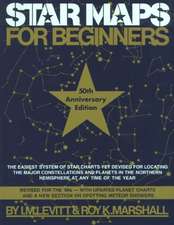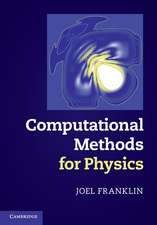Automatic trend estimation: SpringerBriefs in Physics
Autor C˘alin Vamos¸, Maria Cr˘aciunen Limba Engleză Paperback – 15 sep 2012
Din seria SpringerBriefs in Physics
-
 Preț: 477.94 lei
Preț: 477.94 lei -
 Preț: 200.36 lei
Preț: 200.36 lei -
 Preț: 346.92 lei
Preț: 346.92 lei -
 Preț: 312.68 lei
Preț: 312.68 lei -
 Preț: 317.76 lei
Preț: 317.76 lei -
 Preț: 381.00 lei
Preț: 381.00 lei -
 Preț: 311.69 lei
Preț: 311.69 lei -
 Preț: 387.25 lei
Preț: 387.25 lei -
 Preț: 380.07 lei
Preț: 380.07 lei - 17%
 Preț: 359.22 lei
Preț: 359.22 lei -
 Preț: 477.72 lei
Preț: 477.72 lei -
 Preț: 379.86 lei
Preț: 379.86 lei -
 Preț: 378.92 lei
Preț: 378.92 lei -
 Preț: 378.92 lei
Preț: 378.92 lei - 15%
 Preț: 461.73 lei
Preț: 461.73 lei -
 Preț: 413.07 lei
Preț: 413.07 lei -
 Preț: 377.18 lei
Preț: 377.18 lei - 15%
 Preț: 463.85 lei
Preț: 463.85 lei -
 Preț: 376.59 lei
Preț: 376.59 lei -
 Preț: 344.53 lei
Preț: 344.53 lei - 15%
 Preț: 462.70 lei
Preț: 462.70 lei -
 Preț: 475.06 lei
Preț: 475.06 lei -
 Preț: 377.73 lei
Preț: 377.73 lei -
 Preț: 345.89 lei
Preț: 345.89 lei -
 Preț: 378.12 lei
Preț: 378.12 lei - 15%
 Preț: 464.18 lei
Preț: 464.18 lei -
 Preț: 376.80 lei
Preț: 376.80 lei -
 Preț: 409.43 lei
Preț: 409.43 lei -
 Preț: 407.67 lei
Preț: 407.67 lei -
 Preț: 377.57 lei
Preț: 377.57 lei -
 Preț: 380.84 lei
Preț: 380.84 lei - 20%
 Preț: 387.06 lei
Preț: 387.06 lei -
 Preț: 377.73 lei
Preț: 377.73 lei -
 Preț: 380.07 lei
Preț: 380.07 lei - 15%
 Preț: 460.57 lei
Preț: 460.57 lei -
 Preț: 346.23 lei
Preț: 346.23 lei -
 Preț: 343.72 lei
Preț: 343.72 lei -
 Preț: 349.80 lei
Preț: 349.80 lei - 15%
 Preț: 463.53 lei
Preț: 463.53 lei -
 Preț: 376.04 lei
Preț: 376.04 lei -
 Preț: 376.80 lei
Preț: 376.80 lei -
 Preț: 475.65 lei
Preț: 475.65 lei -
 Preț: 375.07 lei
Preț: 375.07 lei -
 Preț: 376.22 lei
Preț: 376.22 lei -
 Preț: 376.80 lei
Preț: 376.80 lei - 15%
 Preț: 462.38 lei
Preț: 462.38 lei -
 Preț: 346.27 lei
Preț: 346.27 lei -
 Preț: 450.33 lei
Preț: 450.33 lei -
 Preț: 376.22 lei
Preț: 376.22 lei
Preț: 347.80 lei
Nou
Puncte Express: 522
Preț estimativ în valută:
66.56€ • 69.23$ • 54.95£
66.56€ • 69.23$ • 54.95£
Carte tipărită la comandă
Livrare economică 12-26 aprilie
Preluare comenzi: 021 569.72.76
Specificații
ISBN-13: 9789400748248
ISBN-10: 9400748248
Pagini: 130
Ilustrații: X, 131 p. 77 illus.
Dimensiuni: 155 x 235 x 20 mm
Greutate: 0.25 kg
Ediția:2013
Editura: SPRINGER NETHERLANDS
Colecția Springer
Seria SpringerBriefs in Physics
Locul publicării:Dordrecht, Netherlands
ISBN-10: 9400748248
Pagini: 130
Ilustrații: X, 131 p. 77 illus.
Dimensiuni: 155 x 235 x 20 mm
Greutate: 0.25 kg
Ediția:2013
Editura: SPRINGER NETHERLANDS
Colecția Springer
Seria SpringerBriefs in Physics
Locul publicării:Dordrecht, Netherlands
Public țintă
ResearchCuprins
Discrete stochastic processes and time series.- Trend definition.- Finite AR(1) stochastic process.- Monte Carlo experiments. - Monte Carlo statistical ensembles.- Numerical generation of trends.- Numerical generation of noisy time series.- Statistical hypothesis testing.- Testing the i.i.d. property.- Polynomial fitting.- Linear regression.- Polynomial fitting.- Polynomial fitting of artificial time series.- An astrophysical example.- Noise smoothing.- Moving average.- Repeated moving average (RMA).- Smoothing of artificial time series.- A financial example.- Automatic estimation of monotonic trends.- Average conditional displacement (ACD) algorithm.- Artificial time series with monotonic trends.- Automatic ACD algorithm.- Evaluation of the ACD algorithm.- A paleoclimatological example.- Statistical significance of the ACD trend.- Time series partitioning.- Partitioning of trends into monotonic segments.- Partitioning of noisy signals into monotonic segments.- Partitioning of a real time series.- Estimation of the ratio between the trend and noise.- Automatic estimation of arbitrary trends.- Automatic RMA (AutRMA).- Monotonic segments of the AutRMA trend.- Partitioning of a financial time series.
Notă biografică
Vamos is Scientific researcher II at "Tiberiu Popoviciu" Institute of Numerical Analysis (Romania). His interests are on time series theory and quantitative finance.
Craciun is Scientific researcher III at "Tiberiu Popoviciu" Institute of Numerical Analysis (Romania). Her interests are on time series theory and quantitative finance.
Craciun is Scientific researcher III at "Tiberiu Popoviciu" Institute of Numerical Analysis (Romania). Her interests are on time series theory and quantitative finance.
Textul de pe ultima copertă
Our book introduces a method to evaluate the accuracy of trend estimation algorithms under conditions similar to those encountered in real time series processing. This method is based on Monte Carlo experiments with artificial time series numerically generated by an original algorithm. The second part of the book contains several automatic algorithms for trend estimation and time series partitioning. The source codes of the computer programs implementing these original automatic algorithms are given in the appendix and will be freely available on the web. The book contains clear statement of the conditions and the approximations under which the algorithms work, as well as the proper interpretation of their results. We illustrate the functioning of the analyzed algorithms by processing time series from astrophysics, finance, biophysics, and paleoclimatology. The numerical experiment method extensively used in our book is already in common use in computational and statistical physics.
Caracteristici
The reader will be able to reproduce the original automatic algorithms for trend estimation and time series partitioning Teaches the essential characteristics of the polynomial fitting and moving averaging algorithms in the case of arbitrary non-monotonic trends With examples of real time series from astrophysics, finance, biophysics, and paleoclimatology as encountered in practice Includes supplementary material: sn.pub/extras















